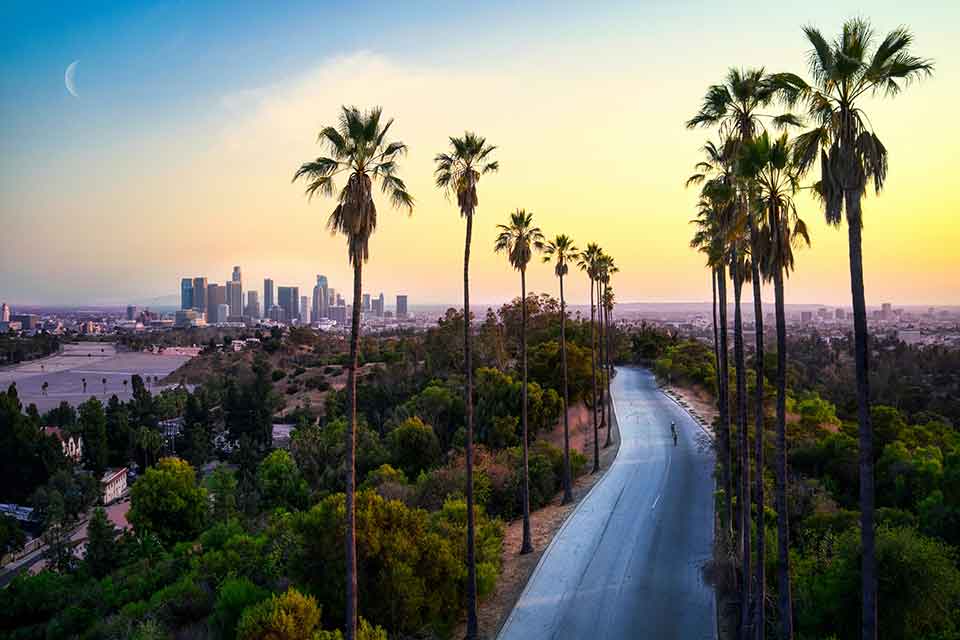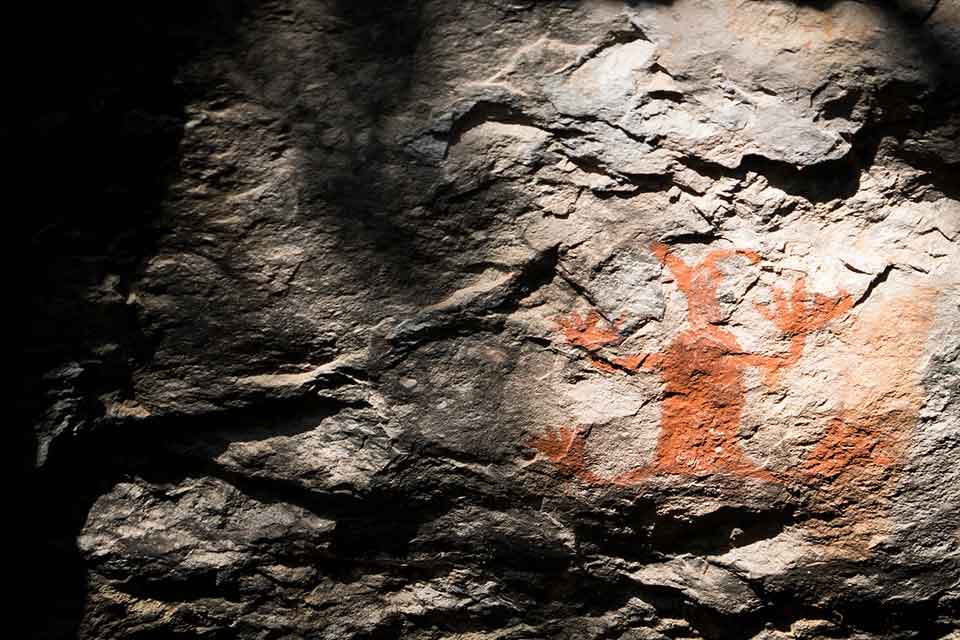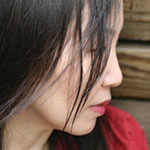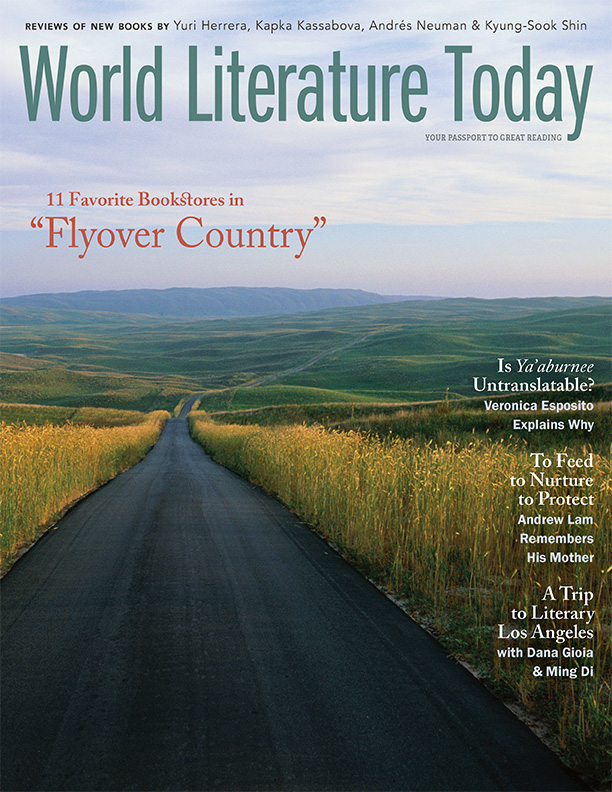Literary Los Angeles
 Perpetually Demolished, Perpetually Renewed
Perpetually Demolished, Perpetually Renewed
by Dana Gioia
Los Angeles is an impossible city to describe, even for natives. Make any assertion about the place, and the opposite will often be true. There is an old downtown but no real center. Like London, Los Angeles is a metropolis formed by dozens of small towns and districts growing until they merged. LA is simultaneously Watts, Malibu, Hollywood, Bel-Air, Skid Row, Koreatown, Little Tokyo, and Redondo Beach—all connected by interlocking boulevards and freeways.
As a poet, I’ve noticed with regret that the best depictions of LA came from novelists, such as Raymond Chandler, Christopher Isherwood, Ross Macdonald, Joan Didion, and Octavia Butler. Science fiction writers were especially perceptive in conveying its strange quality. Aldous Huxley didn’t need to visit the future; he was already living in West Hollywood. The City of Angels seemed too much for poets. For them, LA was more an anxious state of mind than a physical city.
When André Gide was asked to name France’s greatest poet, he replied, “Victor Hugo, hélas.” Questioned about LA’s best poet, I feel similar misgivings as I sigh, “Charles Bukowski.” Like everyone else, I love “the Buk.” He was funny, touching, and irresistibly crude. But he was no Constantine Cavafy or Charles Baudelaire in capturing the soul and sweep of our cité pleine de rêves. Metro Los Angeles has a population of ten million, but Bukowski’s rumbustious poems mostly present small domestic scenes featuring his lovers, drinking buddies, and himself. He was the town’s unofficial laureate, but he, too, captured the place better in his novels than his verse.
I wanted someone to prove me wrong, so imagine my delight in discovering Boris Dralyuk’s indelible first collection, My Hollywood (see WLT, July 2022, 64). Here, at last, was street-level Los Angeles in all its tarnished splendor. In a city with few pedestrians, Dralyuk is an indefatigable boulevardier who strolls from Venice Pier to Farmer’s Market, and even visits the demolished Garden of Allah, the movie-star hotel of the 1920s. His Hollywood has lost its glamour, but like Cavafy’s Alexandria, it is full of famous ghosts.
Here, at last, was street-level Los Angeles in all its tarnished splendor.
Like many of our best writers, Odesa-born Dralyuk is an immigrant, but unlike Isherwood or Huxley, he came to California at eight. Growing up in the same neighborhoods as Bukowski, he views his adopted hometown without the condescension or alienation that characterizes so much LA literature. His poems celebrate the city others mock. He remembers the Bargain Circus, a local discount store, as a poor kid’s paradise. He takes us into an alleyway to visit the dusty Hollywood Poster Shop where another Boris, the British Mr. Karloff, stares from the vitrines as the Mummy.
Dralyuk captures the weird feel of a town perpetually being demolished and renewed. His elegies for the early twentieth-century bungalows and dingbat apartments display the tender nostalgia that animates his work: “I watch swaths of you demolished / in favor of the featureless and polished / plutocracy of condominiums.” Lost and unloved LA has finally found its poet.

Chumash and Tongva Homers Walking along Wilshire Boulevard
by Ming Di
Los Angeles is a city of highways where time travels fast. Within the legendary Miracle Mile and Museum Row is the La Brea Tar Pits and Museum, the most exciting landmark of this city, where you can see fossils of gigantic animals from the last Ice Age. This is not a Hollywood movie but prehistoric reality: ancient animals were roaming the present-day city center, entrapped in the hundreds of pools of tar and asphalt while crude oil seeped up from the earth.
Chumash people discovered this land and settled here eight to thirteen thousand years ago. They built canoes by putting redwood planks together, sealing the joints with the asphalt from the tar pits. They rowed the canoes (tomols in Chumash) across the Pacific Ocean to reach the islands off the coast. With a fast-forward button, we see that gold was found in Los Angeles in 1842, six years before the Gold Rush of 1848 upstate, then followed oil drilling, Hollywood, the Huntington Library, Griffith Observatory, Music Center, Getty Center, and the Festival of Books. Los Angeles has become a metropolitan city of extremely diverse cultures with old fortune and new money, but Chumash, Tongva, and other Indigenous people have been pushed to the edges of the city geographically, politically, and economically.
Chumash, Tongva, and other Indigenous people have been pushed to the edges of the city geographically, politically, and economically.
Near the skyscrapers in downtown Los Angeles, there is an old bank building where you can find the Last Bookstore (opened in 2011), the largest independent bookstore in California. It’s sort of a combination of the literary Pickwick Bookstore (closed in 1995) and the popular Borders Bookstore (closed in 2011). Not only does the Last Bookstore have a large collection of books, old and new, but also, in a prominent location on its second floor, a bookshelf of Indigenous literature and books on American Indian Studies.
The Rock Paintings of the Chumash: A Study of a California Indian Culture (1965), Campbell Grant’s groundbreaking book on Chumash rock art, which I found online, is my favorite Los Angeles book selection. The amazing graphics of flaming wheels as the sun, snakes as the Milky Way or path to the sky, humans on wings, and especially the geometric symbols—it is through these cave paintings that Los Angeles is connected with ancient cultures around the world. There are hundreds of remarkable pictographs made by Chumash people who have inhabited the Pacific Coast from Los Angeles (Malibu beach) to Paso Robles (midway between Los Angeles and San Francisco) as well as the four Channel Islands off the coast. Grant surveyed seventy sites of Chumash rock art, mostly in hidden caves, and this book with images of the artwork in the caves is a timeless treasure. The symbols of flaming wheels as the sun, snake as the Milky Way, humans on wings, and especially the abstract signs—it is the rock art that connects LA with the ancient cultures of the world.
Chumash were the first people that balanced the ecological system of the area, including present-day Los Angeles, with the mountains, valleys, coastal plains, the marine world, islands off the coast, and the sky above. Chumash cosmology and religion are reflected in their cave paintings. You stare at the images and feel time and space through the ancient life of the animals, plants, rivers, mountain peaks, and star constellations. And you recognize those that are still around you today: pines, four-leaf clovers, five-petal flowers, swordfish, lizards, centipedes, snakes, and condors. Suddenly you understand the Chumash art, the unsayable but on your lips, the down-to-earth yet metaphysical world of Chumash people. It’s through the prehistoric art that one sees a full picture of Los Angeles. Los Angeles is not Los Angeles without the Indigenous cultures.
Ancient rock art has been discovered in five continents around the world, but what makes the Chumash rock art in Los Angeles and southern California special is that it embodies more astronomical bodies and more abstract symbols, more metaphorical, and continued till the nineteenth century. Canadian paleoanthropologist Genevieve von Petzinger recently found thirty-two geometric symbols in the ancient caves across Europe. Campbell Grant, back in 1965, identified thirty-five symbols in Chumash cave paintings and an additional twenty-nine that were found by Frank Fenanga in 1949 among all the forty elements of cave paintings in California. I have compared these three charts and noticed that Chumash used a significant number of the Ice Age European symbols such as the circle, asterisk, line, dot, spiral, triangle, cross, y, and zigzag but also many of its own unique symbols such as concentric circles, diamonds, double cursives, pinwheels, and spiderwebs. It seems that Chumash people were having a graphic dialogue with the people across the ocean and around the earth within a tradition that started in Africa and spread to Eurasia and Australia with similar motifs such as sun, animal, human, and geometric symbols but also full of regional distinctive features.
From here we can see how Chumash art is connected to worldwide prehistoric art and how creative and imaginative the Chumash have been. While the ancient * sign and # sign are very common nowadays, and the heart-shaped sign has become an international symbol, most of these ancient signs (including Chumash signs) have gone two directions, y and w to the phonetic alphabets, big * and aviform (the first two of Genevieve von Petzinger’s thirty-two symbols) to the pictographic writings such as ancient Chinese, except that they have different interpretations in Chinese: the * sign becomes rice, associated with many food words, while the aviform symbol represents roof, associated with words of home and treasure. But I can imagine how an asterisk resembled a rice plant in the field and how a bird-shaped aviform resembled a bird nest and extended to the meaning of all nests, including a dwelling for humans. Concrete and abstract symbols have coexisted from the Ice Age and Stone Age to at least the nineteenth century. And Chumash rock art, as documented by Grant, existed before European contact in 1542 until it died out, unfortunately, in the early nineteenth century when many Chumash people died on the Spanish mission sites.
One day, when I was driving from Los Angeles to Santa Barbara to see Chumash land, I stopped by a coastal restaurant and saw a warning sign about tsunamis. The sign was concentric circles like sound waves. I suddenly realized that the frequent appearance of this familiar symbol in Chumash cave paintings (probably symbolizing waves from the ocean center) could indicate the tsunamis they saw or praying for no tsunamis. For a long time I was also puzzled by the “rake” shapes in Chumash cave paintings until one day I saw them on two sides of a condor image. It dawned on me that the straight lines of rakes could be the raked wings of California condors. Based on what I know of how Chinese words are formed, such as drawing a picture of an object and extending the associated meanings, I try to reinterpret the Chumash rake symbol as “fly up” (for example, fly up from a tsunami), as an abstract sign for birds or any creature that can fly, even as “grow” when it’s on the top or bottom of a tree, as “move forward” when it’s below a boat, or as “angel” or “soul” or “soar” when a humanlike figure has two rakes as hands. There seem to be so many stories in Chumash art, each symbol with variations of shapes forming words, even though the total meanings may be vague, hard to decipher.
Another way to see Chumash rock art is to look at a panel of images as a whole. Each panel seems to be a narrative about an event or a folktale about a deity or a hero. Many symbols and images recur on different panels as if purposefully in a meaningful way. One way to dig out the meanings is to compare them with Chumash mythologies and folklore. For instance, Chumash people see the universe as three worlds, the upper world for the sun and all happiness, the middle world where they live, and the world below with death and devils. A rock painting of a humanlike body with rake-shaped wings or upward movement such as a chain of circles or diamonds as a ladder may indicate a wish for the dead to go to heaven. A symbol of a rainbow or sky bridge or a horizontal ladder may tell a story of human migration from the Pacific islands to the mainland coast. A human body with plant limbs may indicate rebirth or incarnations.
Regardless of what they really mean, there seems to be an early picture-writing system in Chumash rock paintings. Graphic signs are grouped in various combinations and their meanings evolve. Circles may resemble different objects based on the size and context. A big circle may be “sun” when it has flames around it, or small “fruit” when it’s on a tree shape. A big circle with a cross inside it may indicate “four directions or four corners of the earth (the back of a turtle).” A circle with spikes inside it and flames around it may symbolize a sun in movement, and with another circle around the flames may mean there is a larger universe around the moving sun. Circles with successive numbers of spikes inside may constitute a calendar system, and the symbols around the circles may indicate what’s happening in that season. Abstract geometrical shapes may well be maps of the stars and star movement in the sky.
Chumash rock art is poetry open to any interpretation. The original meaning is lost, but the symbolic reference remains.
Chumash rock art is poetry open to any interpretation. The original meaning is lost, but the symbolic reference remains. We can see the concentric circles as ripples of the breathing of the sun at the dawn of each new day. But what did they mean to the Chumash at the time when the art was created? Is it the action of painting or the shape of symbols that’s important to them? They have used the same symbols in painting and engraving on rocks, on wood and oak trees, and in basketry, the same as Indigenous people in Asia who use similar symbols on rocks, pottery, bamboo, silk, bronzeware, and paper.
I’ve noticed the triangle-shaped human bodies in Chumash paintings as well as in the rock paintings in northern China and central Asia. Did the Indigenous people across the continents share their knowledge and skills? Did they each independently develop the graphic expressions and abstract representations? Did they independently discover how the celestial bodies in the sky affect life on earth? Did they independently discover the solstices, equinoxes, and Tropic of Cancer? What were the prehistoric cross-continent contacts and communications like, if any? Through a universal protolanguage such as shared symbols? And the symbols spread around the world through human migrations and trading? One thing in common in the early stage of ancient writing systems around the world is the connection with religious rituals. In worshiping nature gods, in making wishes for good seasons, in attempts at healing the sick and in blessing the dead, our ancestors drew images of the sacrifice and images of what they thought an almighty power was telling them. For instance, the oracle-bone scripts of Chinese are full of pictographs of the sacrificed beings and abstract images of prophecies that formed a writing system. Some of the Yi scripts, even older than Chinese, mostly about Yi religion and historical epics, are found in prehistoric rock art in southwest China. What about the symbols in Chumash rock art, then? Where is the Chumash bard who goes around telling stories that reveal the meanings of Chumash rock art? Do Chumash share cosmology and religion with the neighboring Indigenous people?
Where is the Chumash bard who goes around telling stories that reveal the meanings of Chumash rock art?
Some people consider Chumash art as shamanistic in a negative sense, but the first greatest poet in China, Qu Yuan (c. 340–278 BCE), was a shaman and herbalist besides being a politician. His poetry was full of supernatural elements, and yet, he is still highly regarded today because shamanistic can be ancient and postmodernist at the same time.
Besides the rock art, the arborglyphs, the tomol canoes, Chumash people also made flutes from the bones of condor wings (compare with Jiahu bone flutes from China dated 7,800 to 9,000 years ago and Paleolithic flutes in Germany), weaved fishing nets and baskets, and made seashell beads as money to exchange goods. It’s said that the word “Chumash” means “seashell people” in Chumash. Across the ocean in what’s Shanghai today, Dônđäc people of Tai origin along the coast (source of Austronesian and Polynesian) were using seashells as money at least four thousand years ago, and Nu Yan (the female creator of words) made the word for shells and twenty other words associated with shells that we still use today. The most amazing things that Chumash people made were the rock amphitheaters for worship ceremonies (compare them to the Greek and Roman amphitheaters.)
I like the way Grant talked about “Chumash country,” and I find his book, supplemented by other updated literature, a window to the depths of the Chumash world. The Chumash had a very advanced culture with the wisdom of astronomy, artistic talents in making rock art (possibly a graphic writing system), technology and skills to make long-distance tomol crossing, knowledge of ocean navigation, and concepts of currency, but all these have been mostly wiped out by colonization. If Chumash already had currency and exchanged goods with Tongva and other neighbors and long-distance friends, how did they record all the events and tell each other their tribal histories? Looking at the rich oral literature of the Chumash and Tongva mythologies, legends, and folktales, partially recorded, I can’t help wondering, Where were the Chumash Homer and the Tongva Homer? Vanished in colonization? The revival of Indigenous languages and cultures can be louder, like a real movement, as in the 1960s. (Back in my home country, I have found poets of very small, almost never-heard-of languages who can recite poems in their Indigenous mother tongues such as Mulao, Hani, Buyi, Shui, Naxi, Li, Zhuang, Kam, Yao, Bai, Tai, De’ang, Daur, Lisu, She, Jingpho, Xibe, Wa, and Dônđäc.)
When I was going to the Los Angeles Times Festival of Books as a registered journalist from China, and then as a friend on Steve Wasserman’s guest list in his last two years as the chief, I was always amazed by the huge crowds but sometimes wondered why some publishers would go to New York City to announce their new titles. To me, Los Angeles can be as “cultural” as any other place if it sees its own literary and artistic traditions.
I learned about the Pickwick Bookstore as Susan Sontag’s favorite and read about how she met Thomas Mann, who lived in Los Angeles as an exile. The Thomas Mann House is only a few minutes away from Malibu beach, the Chumash land where “mountains meet the sea” (in Chumash). Six miles from Thomas Mann’s house is Villa Aurora, a German artists’ residence. Jan Wagner showed me around when he was a resident there in 2015. It has a beautiful ocean view facing Catalina Island, which Tongva people inhabited. Thomas Mann and Bertolt Brecht on the wall with Chumash and Tongva people by the window—very surreal, but that seemed to be what Los Angeles had meant to me. If what’s Los Angeles today was shared by Chumash and Tongva and many other tribes, it can be now shared by immigrants from anywhere, natives and drifters alike, permanent or temporary residents alike. But most bookstores in Los Angeles have targeted readers. The Last Bookstore is one of the few exceptions.
From my new home, every morning I see Chumash Homers and Tongva Homers walking along Wilshire Boulevard with Thomas Mann, Christopher Isherwood, Susan Sontag, Eileen Chang, Jack Hirschman, Charles Bukowski, Wanda Coleman, Viet Thanh Nguyen, and many others, like the highway networks of Los Angeles, even though each leads in a different direction.













